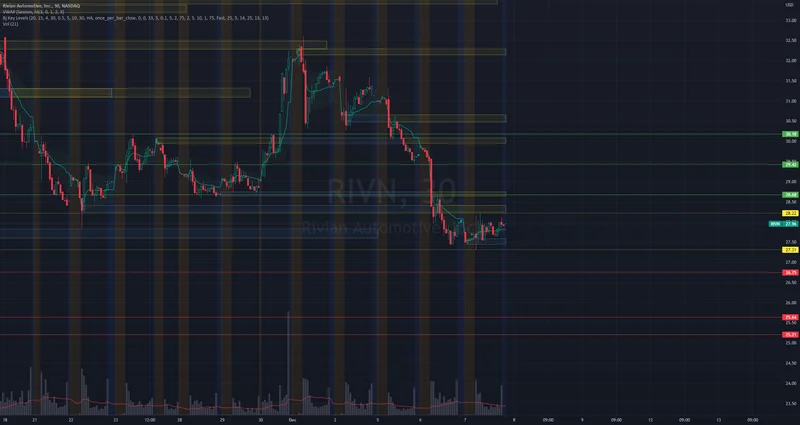Hims Stock Surges 39%: A Data-Driven Look at the Surge
The ticker for Hims & Hers Health (HIMS) has been on a tear. A 39% surge in a single month is the kind of move that gets attention, pushing the stock to a closing price of $57.87. The chatter online, amplified by analyst reports, is coalescing around a simple narrative: this is a disruptive force in healthcare, and even at these prices, it’s a bargain. Evaluating Hims & Hers Health (HIMS) Valuation After 39% Share Price Surge in the Past Month even pegs the stock as 32.8% undervalued, calculating a long-term "fair value" of $86.09.
On the surface, it’s a compelling story. Hims has built a slick, vertically integrated machine for treating common ailments, completely sidestepping the labyrinthine American insurance system. Diagnosis, prescription, fulfillment—it all happens on one clean, digital platform. It’s the Amazon Prime of personal health. But when a narrative feels this clean, my instinct is to look at the numbers. And the numbers are telling a very different, far more complicated story.
The Anatomy of a Growth Premium
Let’s talk about valuation. The price-to-earnings (P/E) ratio for Hims currently sits at 67.6x. To be clear, that means investors are willing to pay $67.60 for every one dollar of the company's current annual profit. This isn't just an optimistic valuation; it's an outlier. The average P/E for the US Healthcare industry is a sober 21.4x. Even among its direct peers, the average is 44.6x. Hims is trading at a premium of more than 200% to its industry and 50% to its peers.
This isn't a critique of the business model itself. The direct-to-consumer, cash-pay approach is genuinely disruptive. It removes friction for the consumer and creates a potentially high-margin, recurring revenue stream. The market sees this and is pricing the company not on its present reality, but on a future where it achieves massive scale with flawless execution.
Buying Hims stock today is like placing a large bet on a promising rookie quarterback to win the championship in his first season. You aren't paying for his current stats; you're paying for the highlight reel of a perfect, undefeated career that exists only in your imagination. The price has baked in a decade of growth, market dominance, and, most importantly, a complete absence of major setbacks.

But healthcare isn't a software business where you can "move fast and break things." It's a heavily regulated minefield. And this is where the premium valuation starts to look less like a vote of confidence and more like a high-wire act with no safety net. What happens to that P/E multiple if a single regulatory change disrupts their model? Does the narrative of frictionless healthcare justify a valuation that is so profoundly disconnected from its sector?
Deconstructing the "Undervalued" Narrative
The argument that Hims is somehow undervalued at these levels is, from my perspective, a masterpiece of assumption-based modeling. That $86.09 price target isn't a fact; it's the output of a spreadsheet, and the output is entirely dependent on the inputs. I've built hundreds of these discounted cash flow models in my career, and this is the part of the analysis that I find genuinely puzzling. To get to a valuation that high, you have to plug in years of sustained, aggressive revenue growth and margin expansion, all while assuming the competitive and regulatory landscape remains benign.
Change one of those assumptions—say, a modest increase in customer acquisition costs or a new federal scrutiny on telehealth prescribing—and that "fair value" can collapse with alarming speed. The model is a delicate house of cards, and the market is acting like it's a fortress.
Let’s add some historical context. The company’s 1-year total shareholder return is a mere 2.4%. Let me correct that for precision: it was approximately 2.4% before this recent spike. This tells us the explosive 39% gain isn't the result of a year-long, steady accumulation of value. It's a sudden, sentiment-driven repricing. It looks less like the market discovering a hidden gem and more like the market chasing momentum, a pattern we’ve seen time and again in other narrative-driven stocks, from `sofi stock` to `tsla stock` in its more volatile days.
The quiet risk humming beneath the surface is regulatory. The company's model relies heavily on its ability to prescribe and, in some cases, use compounding pharmacies (a practice of mixing individual ingredients to tailor medications). This is an area that has drawn, and will continue to draw, scrutiny from the FDA and state pharmacy boards. Any significant change in rules could throw a wrench into the entire vertically integrated machine. That potential for disruption isn't a footnote; it's a core risk to the entire investment thesis, yet the current `hims stock price` seems to assign it a probability of zero.
The Math Doesn't Support the Momentum
Strip away the slick branding and the compelling "disruptor" narrative, and you're left with a set of cold, hard numbers. Hims & Hers is a company priced for a perfect future in an imperfect industry. The current valuation demands a decade of flawless execution, unimpeded growth, and a placid regulatory environment. This isn't an investment in a business; it's a high-premium bet on a story. While the momentum is undeniable, the fundamentals suggest a severe disconnect from reality. The market is paying a champagne price for what is still, fundamentally, a beer-level of proven, long-term profitability. And in my experience, when the math and the momentum diverge this sharply, it's the math that eventually wins.
Related Articles
Rivn Stock Beats Expectations: So What?
Rivian's "Profits"? More Like Smoke and Mirrors for the R2 Hype Train Okay, Rivian technically beat...
Plug Stock's Big Jump: What's Actually Happening and Why You Shouldn't Buy the Hype
So, Plug Power is back. Just when you thought the stock was destined to become a footnote in the ann...
John Malkovich Cast as President Snow: An Analysis of the Casting and Its Implications
The announcement landed with the precision of a well-funded marketing campaign. The Hunger Games, a...
That VTI 'What If' Article: Why It's Mostly Garbage
So, I pulled up my portfolio this morning. September 4, 2025. Ten years to the day since I dropped a...
Comerica Bank: Locations, Phone Numbers, and Why You Can't Find a Human – Give Me a Break...
Generated Title: Comerica: Still a Bank, Or Just a Search Engine Optimization Nightmare? Okay, let's...
Fifth Third Swallows Comerica for $10.9B: Why It's Happening and Why You Should Care
So, another Monday, another multi-billion dollar deal that promises to "create value" and "drive syn...





